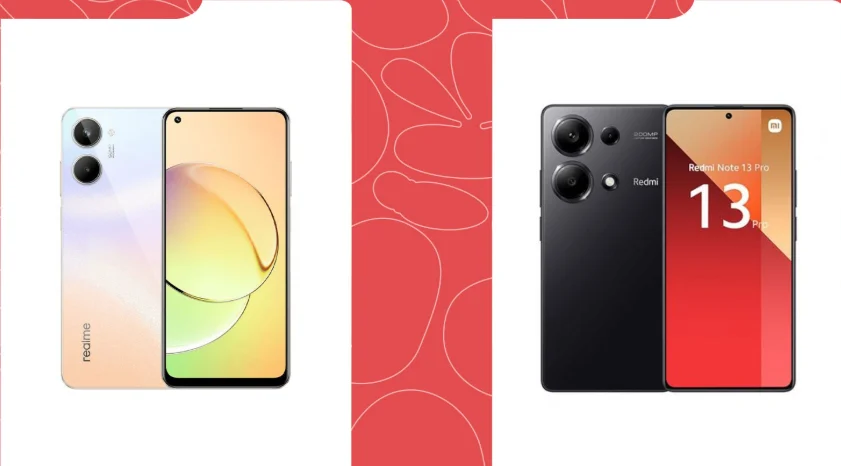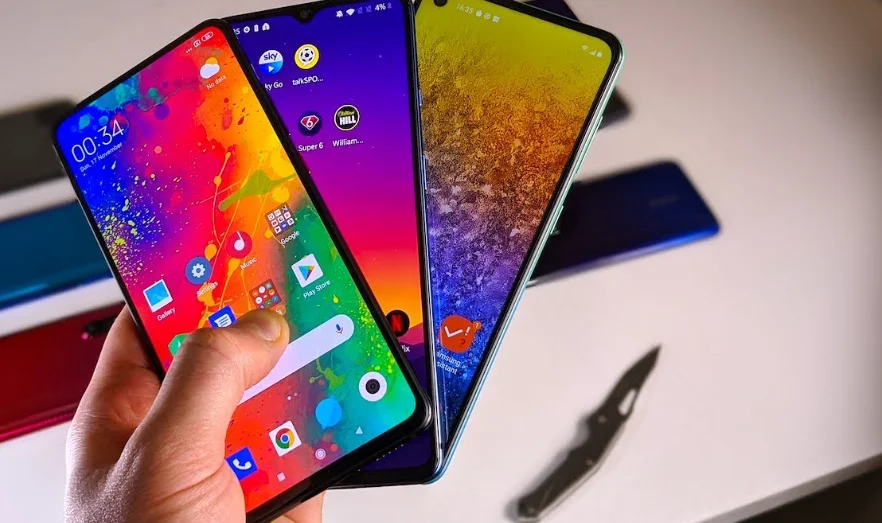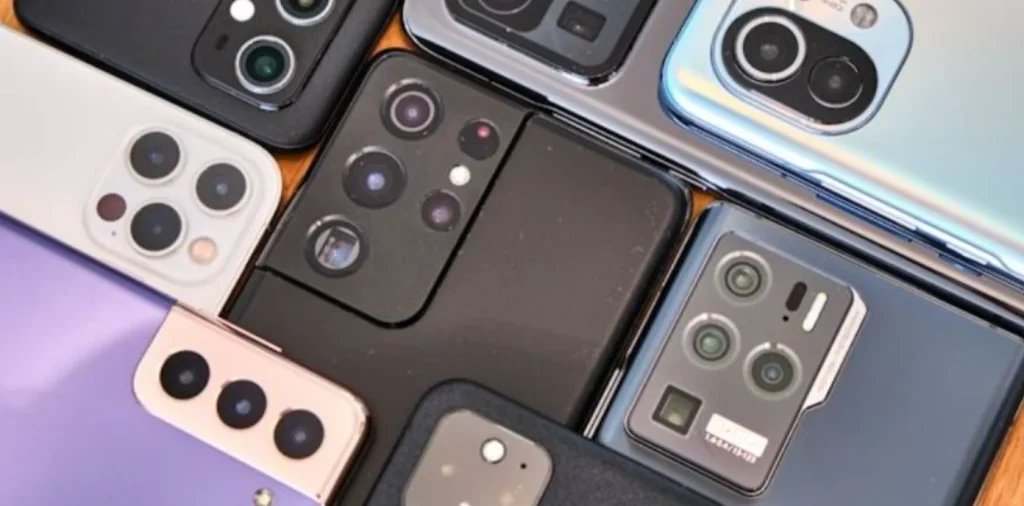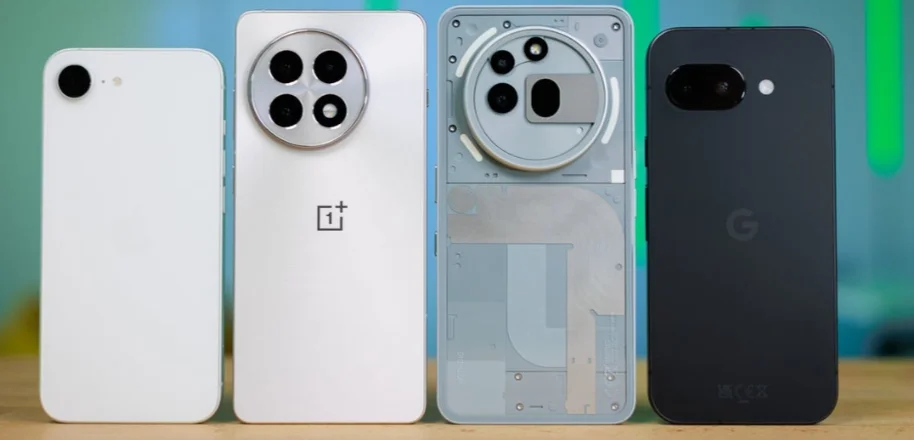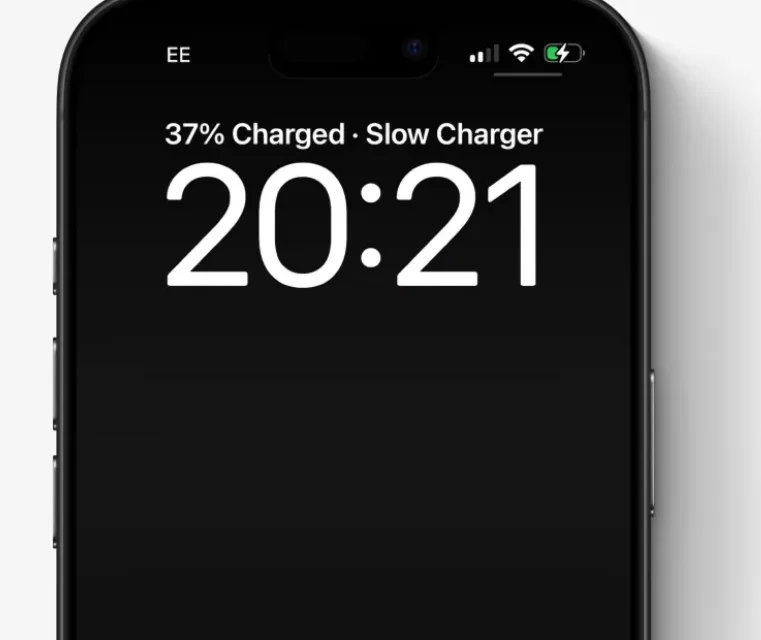Premium Design: Realme Feels More Luxurious, Redmi Keeps It Minimal
The Realme 12 Pro Plus immediately stands out with its Submarine Blue leather finish, gold accents, and luxury watch-inspired camera module. Weighing just 190g, it’s lightweight, comfortable, and feels more premium than most mid-range phones.
In contrast, the Redmi Note 13 Pro adopts a flat, frosted design that resists fingerprints and looks modern. With colour options like Forest Green, Midnight Black, and Aurora Purple, it feels sleek and practical. Plus, it comes with IP54 dust and splash resistance, giving it durability Realme lacks.
Verdict: Realme wins for luxury feel, Redmi wins for practicality.
Display: Both AMOLED, But Redmi is Brighter
The Realme 12 Pro Plus features a 6.7-inch AMOLED screen with 120Hz refresh rate and 950 nits peak brightness. It also supports 2160Hz PWM dimming, reducing eye strain during low-light use.
The Redmi Note 13 Pro goes a step further with a 6.67-inch AMOLED display, 1220 x 2712 resolution, HDR10+, Dolby Vision, and a peak brightness of 1330 nits.
Verdict: Both are smooth and immersive, but Redmi’s higher brightness and HDR features make it better for outdoor and streaming use.
Performance: Close Match with Snapdragon 7s Gen 2
Both devices are powered by the Snapdragon 7s Gen 2 chipset (on the 5G versions). Everyday performance for apps, browsing, and social media is smooth, and light gaming runs well. However, neither device is ideal for heavy gamers compared to rivals with stronger processors.
- Realme 12 Pro Plus: 12GB RAM (expandable to 24GB)
- Redmi Note 13 Pro: 8GB RAM (expandable) with hybrid SD card slot
Verdict: Very close, but Realme edges out with more RAM and smoother multitasking.
Cameras: Realme Wins on Zoom, Redmi on Resolution
- Realme 12 Pro Plus Camera Setup:
- 50MP Sony IMX890 (OIS) main sensor
- 64MP periscope telephoto (3x optical, 6x in-sensor, 120x digital zoom)
- 8MP ultra-wide
- 4K video at 30fps, gyro-EIS
- Redmi Note 13 Pro Camera Setup:
- 200MP main sensor
- 8MP ultra-wide
- 2MP macro
- 1080p video up to 60fps, EIS
The Realme 12 Pro Plus stands out with its periscope zoom lens, offering rare telephoto capability in this price range. The Redmi Note 13 Pro, however, delivers sheer megapixel power with its 200MP sensor, producing sharp daytime shots with great detail.
Verdict: Realme is better for zoom and low-light shots; Redmi is better for ultra-high-resolution photography.
Battery and Charging: Redmi Slightly Ahead
- Realme 12 Pro Plus: 5,000mAh battery, 67W fast charging, 0–100% in ~48 minutes
- Redmi Note 13 Pro: 5,100mAh battery, 67W charging, 0–100% in ~44 minutes
Both devices comfortably last a full day of use. Redmi takes a slight lead with its larger battery and faster charging time.
Verdict: Redmi wins by a small margin.
Software and Extras
- Realme 12 Pro Plus: Android 14 with Realme UI 5.0, stereo speakers, 5G, Wi-Fi 6, NFC, GPS. Missing: 3.5mm headphone jack.
- Redmi Note 13 Pro: Android 13 with MIUI 14 (upgradable to HyperOS), under-display fingerprint sensor, face unlock, customisation options. Includes bloatware but supports dual SIM/SD card flexibility.
Verdict: Realme offers newer software out of the box, but Redmi brings more storage flexibility.
Final Verdict: Realme 12 Pro Plus vs Redmi Note 13 Pro
Both phones deliver excellent mid-range value, but the choice depends on your priorities:
- Choose Realme 12 Pro Plus if you want luxury design, periscope zoom camera, and extra RAM.
- Choose Redmi Note 13 Pro if you prefer a brighter display, higher-resolution camera, bigger battery, and splash resistance.
Either way, both models cement themselves as two of the best mid-range smartphones of 2025.







